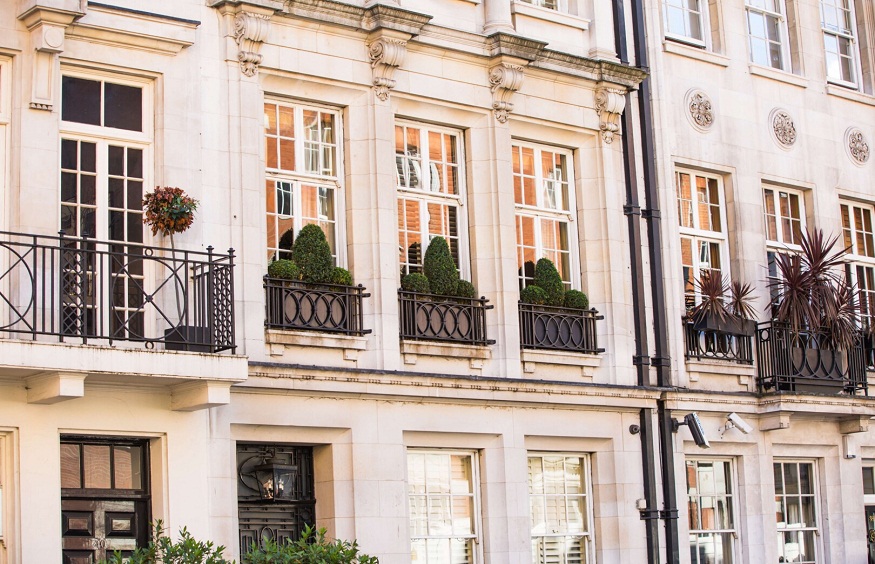London is one of the most dynamic and lucrative property markets in the world. Investors are drawn to its mix of historical appeal, cultural diversity, and economic strength. However, with such an expensive and competitive market, understanding the right investment strategies is crucial to making the most of opportunities in the city. From established areas like St John’s Wood to emerging districts, knowing where and how to invest can lead to substantial returns. Here’s a look at some of the top property investment strategies to consider in London.
1. Investing in High-Value Areas like St John’s Wood
London’s prime residential areas, such as St John’s Wood, continue to attract international buyers and high-net-worth individuals. St John’s Wood is synonymous with luxury, exclusivity, and prestige, making it a desirable destination for property investment. While property prices in such high-value areas can be steep, the potential for long-term capital appreciation is significant.
Investors looking for a secure, long-term investment might consider buying property for sale in St John’s Wood. Properties here often appreciate in value due to the area’s desirability, historical significance, and close proximity to central London. Moreover, the appeal of high-end properties in St John’s Wood isn’t just limited to the capital’s residents. International buyers often seek prestigious homes in locations like this, enhancing demand.
Working with St John’s Wood estate agents can provide valuable insights into market trends, upcoming opportunities, and the most desirable properties in the area. Estate agents with local expertise can help buyers navigate the competitive landscape and identify properties that offer the best investment potential.
2. Buying Off-Plan Properties
Off-plan properties are becoming an increasingly popular investment option in London, especially in newly developed areas. Off-plan properties refer to those that are purchased before the building is completed. One of the main advantages is that they are typically available at a lower price compared to completed properties, offering investors the opportunity to secure an asset at a competitive rate.
In a city where property prices are continuously rising, securing an off-plan property can result in significant capital gains once the development is completed. Furthermore, off-plan properties often come with modern amenities, energy-efficient designs, and are located in upcoming neighbourhoods, making them attractive to renters and future buyers.
However, investors must carefully research the developers and the project to ensure the property will be completed to a high standard and on time. Choosing a reputable developer is key to minimising risks associated with off-plan investments.
3. Exploring Buy-to-Let Investments
Buy-to-let remains one of the most popular investment strategies in London, thanks to the city’s high demand for rental properties. London’s transient population, which includes students, young professionals, and expatriates, creates a constant demand for rental accommodation. This demand is particularly strong in well-connected areas with good transport links and proximity to key business districts.
When considering buy-to-let investments, location is everything. Areas such as St John’s Wood, Canary Wharf, and Kensington attract high-quality tenants who are willing to pay a premium for convenience and luxury. Rental yields in these areas may not be the highest in percentage terms compared to outer London boroughs, but the stability of demand and potential for capital appreciation make them attractive long-term investments.
Investors must also factor in government policies regarding landlord regulations and taxes, such as stamp duty and income tax. Understanding these regulations will help ensure that buy-to-let investments remain profitable in the long run.
4. Investing in Renovation and Refurbishment
Renovation and refurbishment projects can provide substantial returns for investors who are willing to take on the challenge. London is filled with older properties that can be purchased at a lower cost, refurbished, and then sold or rented out at a higher price.
Areas like St John’s Wood offer a mix of historical homes and modern luxury apartments. Investing in a renovation project in a high-value area can be a smart strategy for capital appreciation. Buyers interested in properties for sale in St John’s Wood could find period homes in need of renovation, where the value can be significantly increased with the right improvements.
However, it’s essential to have a clear understanding of renovation costs, potential legal issues (such as listed building status), and local planning regulations before undertaking such a project. Partnering with architects, builders, and estate agents familiar with the area is crucial to a successful renovation.
5. Diversifying Through Short-Term Rentals
The rise of short-term rental platforms such as Airbnb has provided property investors in London with an alternative way to generate income. Short-term rentals can offer higher yields than traditional long-term rentals, particularly in tourist-friendly and business-heavy areas. St John’s Wood, known for its proximity to famous landmarks like Abbey Road and Lord’s Cricket Ground, can be an attractive option for investors seeking to capitalise on short-term lets.
However, investors should be aware of regulations surrounding short-term rentals in London, including the 90-day rule, which limits short-term lets to 90 days per year unless planning permission is obtained. Properly managing short-term rentals requires careful attention to maintenance, guest turnover, and compliance with local laws. Property management companies can assist investors in navigating the complexities of short-term rentals and ensure a smooth operation.
6. Focusing on Emerging Neighbourhoods
While established areas like St John’s Wood offer stability and long-term appreciation, emerging neighbourhoods provide opportunities for more aggressive growth. Districts undergoing regeneration, such as Tottenham, Croydon, and Stratford, are attracting investors due to lower entry prices and higher potential for capital gains. As infrastructure improves and more amenities are developed, properties for sale in St John’s Wood are expected to rise.
Investing in an up-and-coming neighbourhood can be a strategic move for those looking for a higher return on investment. While it may come with slightly higher risks than investing in prime areas, the upside can be substantial, especially as London continues to expand and regenerate.
Conclusion
London’s property market remains one of the most attractive investment destinations globally. Whether you’re investing in prime areas like St John’s Wood or exploring emerging neighbourhoods, having a clear strategy is essential to maximising your returns. Collaborating with estate agents in St John’s Wood and understanding local market dynamics will help investors make informed decisions. From off-plan properties to buy-to-let and renovation projects, there’s a strategy for every type of investor in London’s vibrant property market.

